X. Luo
Deep Neural Network for Water/Fat Separation: Supervised Training, Unsupervised Training, and No Training
Apr 16, 2020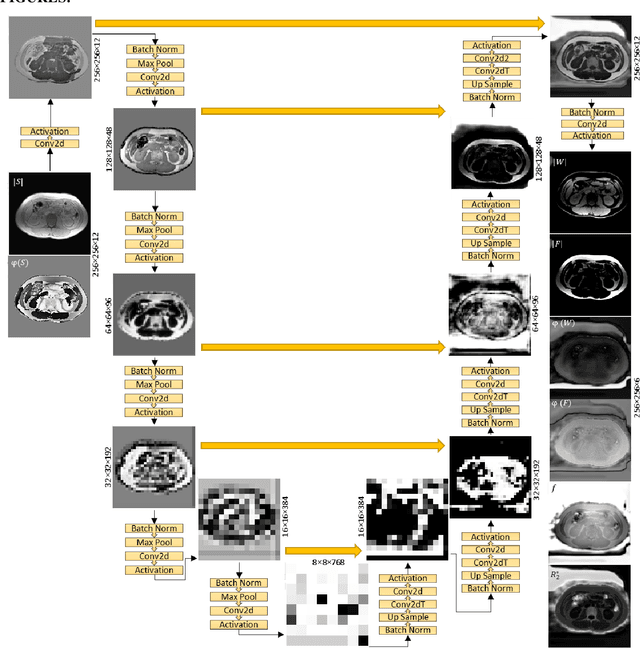
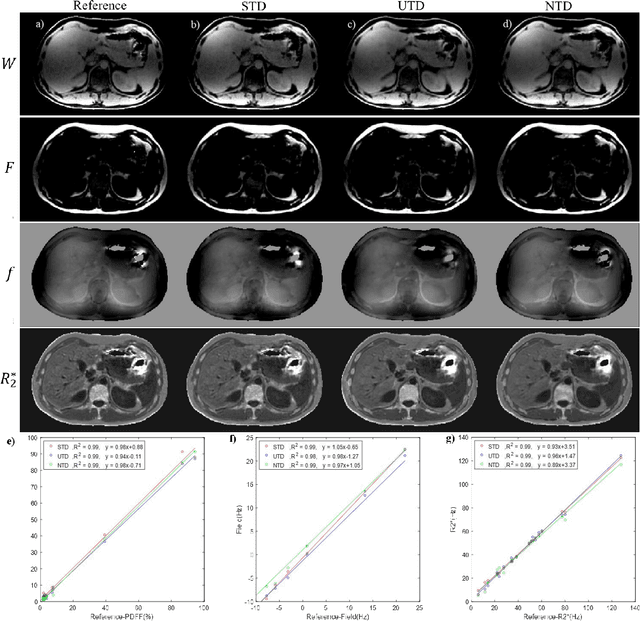
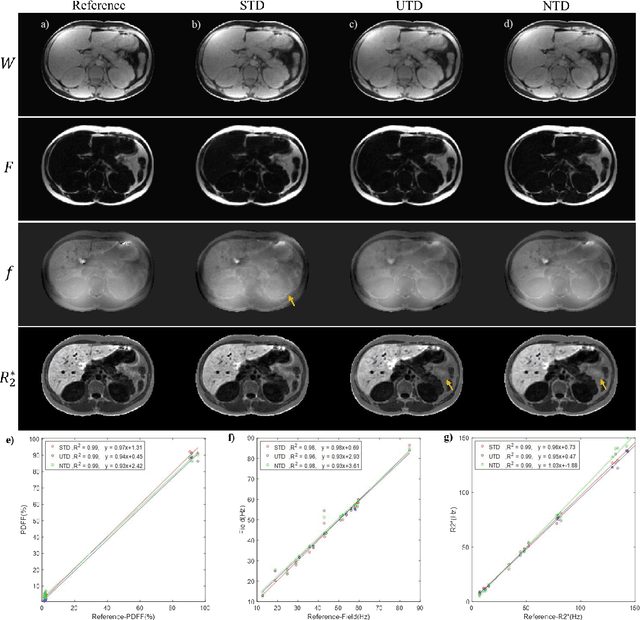
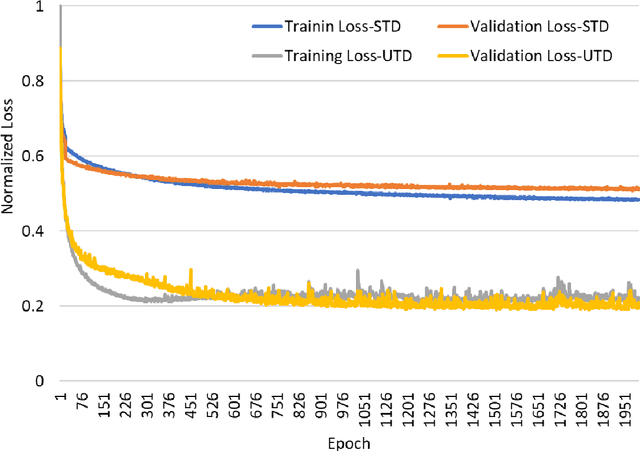
Abstract:Purpose: To use a deep neural network (DNN) for solving the optimization problem of water/fat separation and to compare supervised and unsupervised training. Methods: The current T2*-IDEAL algorithm for solving fat/water separation is dependent on initialization. Recently, deep neural networks (DNN) have been proposed to solve fat/water separation without the need for suitable initialization. However, this approach requires supervised training of DNN (STD) using the reference fat/water separation images. Here we propose two novel DNN water/fat separation methods 1) unsupervised training of DNN (UTD) using the physical forward problem as the cost function during training, and 2) no-training of DNN (NTD) using physical cost and backpropagation to directly reconstruct a single dataset. The STD, UTD and NTD methods were compared with the reference T2*-IDEAL. Results: All DNN methods generated consistent water/fat separation results that agreed well with T2*-IDEAL under proper initialization. Conclusion: The water/fat separation problem can be solved using unsupervised deep neural networks.
A Deep Neural Network for Pixel-Level Electromagnetic Particle Identification in the MicroBooNE Liquid Argon Time Projection Chamber
Aug 22, 2018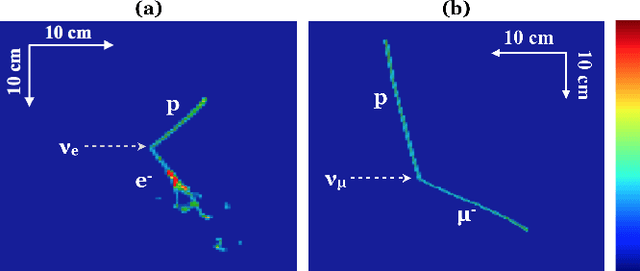
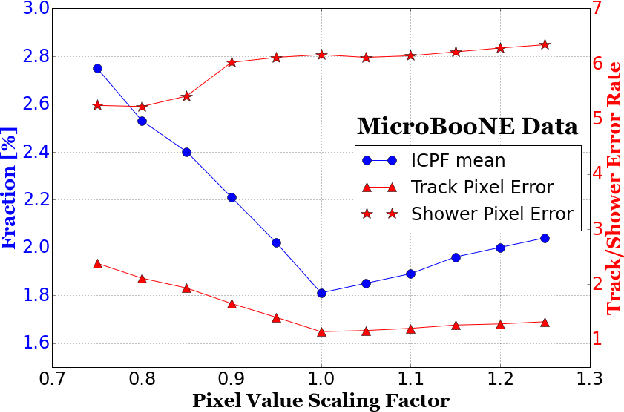
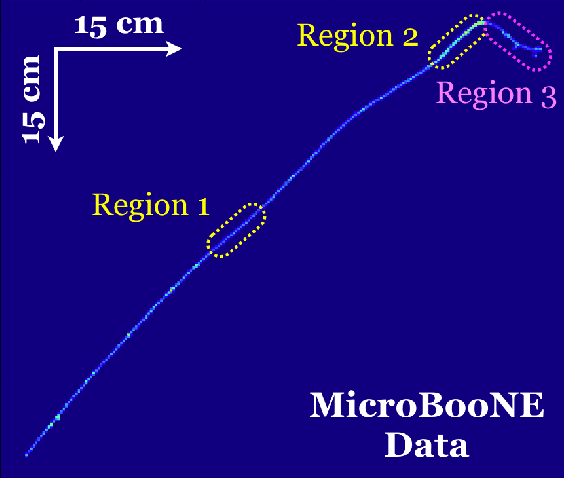
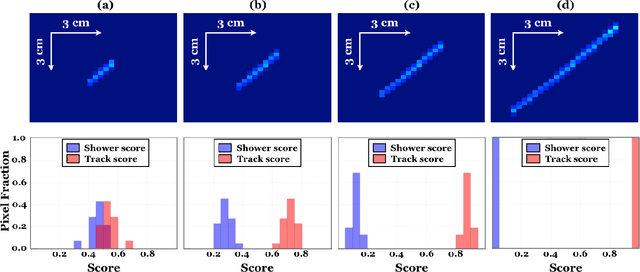
Abstract:We have developed a convolutional neural network (CNN) that can make a pixel-level prediction of objects in image data recorded by a liquid argon time projection chamber (LArTPC) for the first time. We describe the network design, training techniques, and software tools developed to train this network. The goal of this work is to develop a complete deep neural network based data reconstruction chain for the MicroBooNE detector. We show the first demonstration of a network's validity on real LArTPC data using MicroBooNE collection plane images. The demonstration is performed for stopping muon and a $\nu_\mu$ charged current neutral pion data samples.
 Add to Chrome
Add to Chrome Add to Firefox
Add to Firefox Add to Edge
Add to Edge